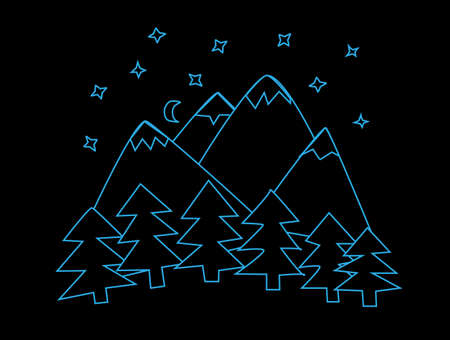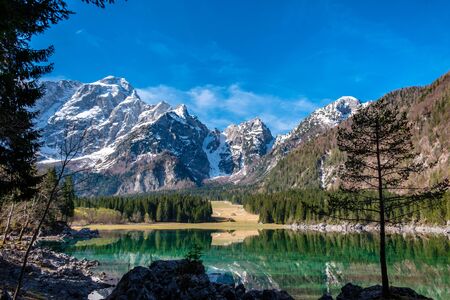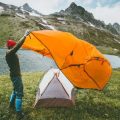1. Best National Parks for Snowy Scenery and Serenity
Winter is a magical time to explore Americas national parks. With fewer crowds, peaceful backcountry trails, and snow-covered landscapes, winter camping becomes a whole new kind of adventure. If youre looking for stunning snowy views and quiet escapes, here are some of the best national parks to visit during the colder months.
Top Picks for Winter Camping with Snowy Views
The following parks offer incredible winter experiences, from snowshoeing through frozen forests to waking up in a tent surrounded by white-capped peaks. Whether youre an experienced winter camper or trying it for the first time, these destinations combine beauty and solitude.
| National Park | State | Winter Highlights |
|---|---|---|
| Yellowstone National Park | Wyoming, Montana, Idaho | Bison in snow, geysers steaming in cold air, guided winter camping tours |
| Yosemite National Park | California | Snow-covered granite cliffs, quiet valley hikes, cross-country skiing |
| Rocky Mountain National Park | Colorado | Frozen lakes, alpine trails, snowshoeing among pine forests |
| Mount Rainier National Park | Washington | Sledding hills, backcountry ski camping, mountain views under snow |
| Bryce Canyon National Park | Utah | Red rock hoodoos dusted with snow, star-filled skies at night |
A Quieter Side of Nature
If youve only visited national parks during summer or fall, youll be surprised how different they feel in winter. Campgrounds are often empty or offer designated winter sites. Wildlife is more visible against the snow, and ranger-led programs like snowshoe hikes provide safe ways to explore. For campers who enjoy peace and solitude, this is the perfect season to connect deeply with nature.
Tips for Winter Camping in National Parks
- Check park websites for seasonal access info and permits.
- Dress in layers and pack insulated gear rated for cold temperatures.
- Avoid overpacking—focus on warmth and safety essentials.
- Create a backup plan in case of road closures or extreme weather.
This is just the beginning of your journey through the top 10 national parks for winter camping adventures. Stay tuned as we explore more breathtaking locations perfect for chilly escapes into the wild.
2. Essential Gear for Cold Weather Camping
Winter camping in America’s stunning national parks—from Yellowstones snow-covered valleys to the icy wilderness of Denali—can be an unforgettable experience. But freezing temperatures, unpredictable weather, and snow-laden trails mean you need the right gear to stay warm, dry, and safe. Here’s a guide to must-have equipment and clothing designed specifically for cold-weather adventures.
Layering: Your First Line of Defense Against the Cold
Dressing in layers allows you to regulate your body temperature as conditions change. Heres how to build a proper layering system:
| Layer | Purpose | Recommended Materials |
|---|---|---|
| Base Layer | Moisture wicking to keep skin dry | Merino wool or synthetic (no cotton) |
| Mid Layer | Insulation to retain body heat | Fleece, down, or synthetic fill |
| Outer Layer | Protection from wind, snow, and rain | Waterproof/breathable shell (Gore-Tex or similar) |
Cold-Weather Sleeping System
A good night’s sleep is crucial when you’re winter camping at places like Rocky Mountain National Park or Mount Rainier. You’ll need gear that stands up to sub-zero temps:
- Sleeping Bag: Choose one rated at least 10–15°F below the expected nighttime low. Down bags are lighter but synthetic insulates better when wet.
- Sleeping Pad: Use an insulated pad with an R-value of 4 or higher. Consider doubling up with a closed-cell foam pad underneath.
- Liner: A sleeping bag liner can add extra warmth and keep your bag clean.
Tent and Shelter Setup
Your tent should be able to withstand wind and heavy snow loads, especially if youre heading to alpine areas like Glacier National Park:
- Four-season Tent: Designed for winter use with stronger poles and better insulation.
- Snow Stakes: Regular stakes won’t hold in snow—bring specialized snow stakes or use deadman anchors.
- Footprint or Tarp: Protects your tent floor from ice and moisture.
Campsite Essentials
| Item | Description |
|---|---|
| Stove & Fuel | A liquid fuel stove works best in freezing temps; canister stoves may fail in extreme cold. |
| Water Storage | Use wide-mouth bottles to prevent freezing; store upside-down so ice forms at the bottom. |
| Headlamp with Extra Batteries | Batteries drain faster in the cold—keep spares warm inside your jacket. |
| Trekking Poles & Microspikes | Add traction on icy trails; help navigate deep snow or uneven terrain. |
Cold-Weather Clothing Extras
- Insulated Gloves and Mittens: Keep hands warm during camp setup or hiking.
- Wool Hat & Balaclava: Prevent heat loss from your head and face.
- Crampons or Snowshoes: Necessary for navigating snowy backcountry routes like those in Yosemite’s high country.
- Gaiters: Keep snow out of boots and lower pant legs dry.
Packing Tip:
Avoid overpacking but never skimp on insulation and safety gear. Always check park regulations for backcountry permits and avalanche conditions before heading out.
Sneaky Cold Weather Hack:
Sleep with your next days clothes inside your sleeping bag so they’re warm when you get dressed in the morning!
The right gear makes all the difference between a miserable night in the cold and an epic winter adventure across America’s top national parks. Whether youre snowshoeing through Grand Teton or stargazing in Bryce Canyons frosty silence, being prepared ensures every moment is magical—and safe.

3. Winter Wildlife Watching Hotspots
Winter camping in national parks offers a unique chance to see wildlife that’s harder to spot during warmer months. As snow blankets the landscape and crowds thin out, animals often move closer to accessible areas, making winter an ideal time for wildlife watching. From massive bison in Yellowstone to bugling elk in the Rocky Mountains, here are some top parks where you can enjoy unforgettable wildlife encounters.
Top National Parks for Winter Wildlife Viewing
| National Park | Key Wildlife | Best Viewing Spots |
|---|---|---|
| Yellowstone National Park | Bison, wolves, elk, coyotes | Lamar Valley, Hayden Valley |
| Rocky Mountain National Park | Elk, mule deer, moose | Moraine Park, Horseshoe Park |
| Grand Teton National Park | Bison, moose, bald eagles | Antelope Flats, Oxbow Bend |
| Denali National Park (Alaska) | Caribou, wolves, lynx | Savage River area (weather permitting) |
| Zion National Park | Bighorn sheep, mule deer | Canyon Overlook Trail, Kolob Canyons |
Tips for Safe and Responsible Wildlife Viewing
Keep Your Distance
Always stay at least 100 yards from predators like wolves and bears, and 25 yards from other large animals such as bison and elk. Use binoculars or zoom lenses to get a closer look safely.
Be Quiet and Patient
Wildlife is more likely to appear when youre still and silent. Avoid sudden movements or loud noises that could startle animals.
Avoid Feeding Animals
Feeding wildlife is not only dangerous but also illegal in most parks. Human food can harm animals and make them dependent on people.
Dress for the Cold and Stay Aware
Wear layers to keep warm while waiting or hiking. Be alert for changing weather conditions and always let someone know your plans before heading into remote areas.
Pro Tip:
The early morning and late afternoon are often the best times for spotting active wildlife in winter. Plan your hikes or viewing around these golden hours for the best chances of success.
4. Safety Tips for Winter Expeditions
Winter camping in Americas national parks offers breathtaking views and unforgettable adventures, but it also comes with unique challenges. Whether youre exploring the snow-covered trails of Yosemite or setting up camp in Rocky Mountain National Park, safety should always be your top priority. Here are some essential tips to help you stay safe during your winter expedition.
Know Before You Go
Before heading out, always check the weather forecast, park alerts, and road conditions. Many national parks update their websites daily during the winter months. Knowing what to expect can help you prepare appropriately and avoid dangerous surprises.
Stay Safe on Icy Trails
Trails in parks like Glacier or Mount Rainier can get extremely icy. Traction devices like microspikes or crampons can make a big difference in preventing slips and falls. Trekking poles also provide extra stability on steep or uneven terrain.
Recommended Gear for Icy Conditions:
| Gear | Purpose |
|---|---|
| Microspikes/Crampons | Improves traction on ice and packed snow |
| Trekking Poles | Provides balance and reduces strain on knees |
| Waterproof Boots | Keeps feet dry and warm in snowy conditions |
Altitude Awareness
Many top winter parks—like Rocky Mountain or Grand Teton—are located at high elevations. Be aware of altitude sickness symptoms such as headaches, nausea, dizziness, and fatigue. If you’re not used to high altitudes, give yourself time to acclimate before doing strenuous activities.
Quick Altitude Tips:
- Hydrate well before and during your trip
- Avoid alcohol for the first 24 hours at elevation
- Take it slow—don’t rush your hikes or climbs
- If symptoms worsen, descend immediately
Avoiding Hypothermia
Hypothermia is a serious risk when camping in cold temperatures. It can set in quickly if youre wet or underdressed. Dress in layers so you can adjust your insulation as needed throughout the day.
Layering System for Winter Camping:
| Layer | Description |
|---|---|
| Base Layer | Moisture-wicking material (avoid cotton) |
| Middle Layer | Insulation like fleece or down jacket |
| Outer Layer | Waterproof and windproof shell jacket/pants |
Be Aware of Winter-Specific Risks
Each park has its own set of seasonal hazards. In Yellowstone, geothermal areas may be hidden by snow; in Sequoia, heavy snowfall can break tree limbs unexpectedly. Always read posted signs and talk to rangers if youre unsure about conditions.
Additional Safety Reminders:
- Packs extra food and water—your body burns more calories in cold weather
- Campsites may require special permits in winter—check with each parks regulations
- Nights are long and cold: bring extra batteries for flashlights and headlamps
- Avalanche zones exist in some parks—check local avalanche forecasts if venturing into backcountry areas
A little preparation goes a long way toward making your winter camping adventure both memorable and safe!
5. Permits, Accessibility, and Park Services in Winter
Winter camping in national parks can be an unforgettable adventure, but it also comes with unique rules and limitations. Before you pack your gear, its important to know which parks require special permits, what areas might be closed due to snow, and what amenities are available during the off-season.
Winter Camping Permits
Some national parks require a backcountry or winter-specific camping permit even during the colder months. Heres a quick look at the permit requirements for our top 10 winter camping destinations:
| National Park | Winter Camping Permit Required? | Notes |
|---|---|---|
| Yellowstone National Park | Yes | Backcountry camping requires a permit; limited access via guided tours or snowmobile. |
| Yosemite National Park | Yes | Wilderness permits required for overnight trips; some trailheads closed in winter. |
| Grand Teton National Park | Yes | Permits required for backcountry use; many campgrounds close after fall. |
| Zion National Park | No (for frontcountry) | No permit needed for South Campground; wilderness permits still needed for backcountry. |
| Bryce Canyon National Park | Yes | Free permit required for winter backcountry camping. |
| Rocky Mountain National Park | Yes | Backcountry camping permits required year-round. |
| Mount Rainier National Park | Yes | Winter travel requires permits; avalanche awareness strongly advised. |
| Great Smoky Mountains National Park | Yes | Campsite reservations or backcountry permits needed depending on area. |
| Apostle Islands National Lakeshore | No (ice caves closed when unsafe) | No permits needed unless staying overnight on islands; check ice conditions daily. |
| Crater Lake National Park | No (snow camping allowed) | No permit needed for snow camping near Rim Village, but register at visitor center. |
Accessibility and Road Closures
Snow and icy conditions can lead to seasonal road closures or restricted access. Some parks only remain partially open in winter. Here’s what you need to know:
- Yellowstone: Most roads closed to regular vehicles; over-snow travel only by guided tour or snowmobile.
- Yosemite: Tioga Road and Glacier Point Road typically close by November.
- Zion: Zion Canyon Scenic Drive is accessible via private vehicles in winter (shuttle system inactive).
- Bryce Canyon: Main roads usually plowed, but some trails may be icy or snow-covered.
- Apostle Islands: Mainland ice caves only accessible when Lake Superior freezes solid—check with rangers before attempting any hike across ice.
Winter Park Services and Amenities
A lot of services scale down in the colder months. Visitor centers might have shorter hours or be closed entirely. Here’s a general idea of what to expect:
| Park Name | Lodging/Campgrounds Open? | Main Visitor Center Open? |
|---|---|---|
| Zion | Lodging available in nearby Springdale; South Campground open with limited services. | Zion Canyon Visitor Center open year-round with limited hours. |
| Bryce Canyon | Navajo Loop often closed due to snow; Sunset Campground closed—North Campground open year-round. |


